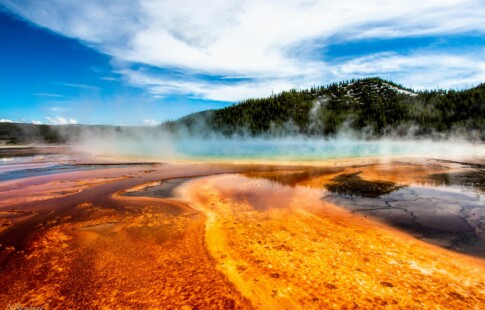
How Does Desalination Work? Access to Drinking Water
We are reader-supported. When you buy through links on our site, we may earn affiliate commission.
Water scarcity affects an estimated one out of three people on every continent, according to the World Health Organization (WHO).It’s crucial that we find solutions to this crisis, especially since water shortages are expected to worsen as the population grows, consumption increases and climate change increases the frequency and severity of droughts. One potential solution is desalination, which is defined as any of several processes used to remove dissolved salts from water to make the water drinkable.
How Does Desalination Work?
There are various processes used to desalinate seawater, brackish water and other types of water that contain dissolved salts and other minerals. Most desalination techniques are either thermal-based or use a membrane. Here’s a closer look at both types:
1. Thermal
Thermal desalination techniques involve heating the water until it turns to steam and then collecting that steam. When the water evaporates, it leaves the salts behind. Desalination plants often use a technique called multi-stage flash desalination that involves quickly bringing the water to a boil several times.
A multi-stage flash thermal process is as follows:
- Initial Heating: The saltwater is heated to approximately 200° Fahrenheit.
- Introduction of Cold Water: Cold water flows through the coils in the flash chambers. It flows into each chamber at a slightly lower pressure.
- Boiling: The changes in pressure cause the saltwater to boil upon entering each chamber.
- Condensation: The resulting vapor condenses around the tubes carrying cold water, leaving the salts and other compounds behind.
- Disposal of Concentrates: The concentrates are mixed with water and returned to the source.
- Post-Treatment: Chemicals and minerals are added to the water to further sterilize it and ready it for consumption
2. Membrane
You can also accomplish desalination through reverse osmosis. This process forces the water through a series of semi-permeable membranes that remove the salt from the water.
In a reverse osmosis plant, the process works like this:
- Pre-Treatment: Chemicals are used to stabilize the saltwater, and a set of filters removes large particles and some of the salt.
- Membrane Phase: Next, the water is forced through various membranes that separate salt and other compounds from the water.
- Disposal of Concentrates: The concentrates are mixed with water and returned to the source.
- Post-Treatment: Chemicals and minerals are added to the water to further sterilize it and ready it for consumption.
Although these are the two most common processes, there are others used in some situations, including variations on these two techniques. Researchers are also studying and testing new desalination technologies.
What Are the Benefits?
An estimated 96.5 percent of the water on earth is in the oceans, and another 0.9 percent consists of other saline water. That means only 2.5 percent of all the earth’s water is freshwater.
As water scarcity becomes a more pressing issue in many parts of the world, desalination provides a way to access this vast resource. Desalination makes it possible for people in parts of the world without consistent access to freshwater to have a reliable source of drinking water.
In addition to removing salts, desalination also removes other compounds that would make the water unsafe to drink.
What Are the Drawbacks?
There are still several challenges associated with desalinating water that have prevented it from being used more widely. A primary difficulty is the high cost of desalination resulting from the massive amounts of energy it requires.
The cost of desalinating water varies, depending on the type of technology used, the price of electricity and the type of water since saltier water can be more difficult to process. The typical price to desalinate about 325,000 gallons of saltwater ranges from around $800 to $1,400.Because of the high amounts of energy required, it can also lead to increased greenhouse gas emissions if it uses energy from power plants that use fossil fuels.
Additionally, pulling water from the oceans can harm marine life. Facilities also have to get rid of the leftover salts. They sometimes inject them back into the ocean, but this can make the water excessively salty, which can damage marine ecosystems and make water harder to desalinate later.
Current Use
Today, the Middle East is the most prominent user of desalination. Many countries in this area rely on desalination because they lack access to freshwater sources, even groundwater. Israel gets around 40 percent of its water through desalination and Saudi Arabia, Kuwait and the United Arab Emirates rely heavily on it as well.
Only about one percent of the world’s population currently uses desalination to get their water. That percentage, however, and the number of desalination plants are growing every year.
Ongoing Projects and Research
Countries like Israel continue to invest in desalination, and California is building numerous new plants following the recent droughts. Most of the California projects will use brackish water, as opposed to seawater.
Research into reducing the energy intensiveness of current techniques is ongoing as well. Some have proposed using solar energy to lower energy costs and associated emissions. Groups are also working to minimize desalination’s impact on marine life. One proposed approach is subsurface intake, which involves pulling in water from underneath the seafloor or a beach.
Additionally, researchers are working on new processes that could make desalination more cost-effective and sustainable. Forward osmosis, for example, uses a solution of ammonia and carbon dioxide gases dissolved in water to draw water through a membrane. Researchers say it requires one-tenth the energy of reverse osmosis. Additionally, according to the International Water Association, technological advances could bring the cost of desalination down five percent from 2016 levels by 2021 and down 60 percent by 2036.Desalination has the potential to improve access to drinking water, but it’s still much more expensive than other methods of getting water. For most parts of the world, it remains a last resort. If water shortages continue to become more common, however, more people may have to turn to desalination.
Share on
Like what you read? Join other Environment.co readers!
Get the latest updates on our planet by subscribing to the Environment.co newsletter!
About the author

Jane Marsh
Starting from an early age, Jane Marsh loved all animals and became a budding environmentalist. Now, Jane works as the Editor-in-Chief of Environment.co where she covers topics related to climate policy, renewable energy, the food industry, and more.





